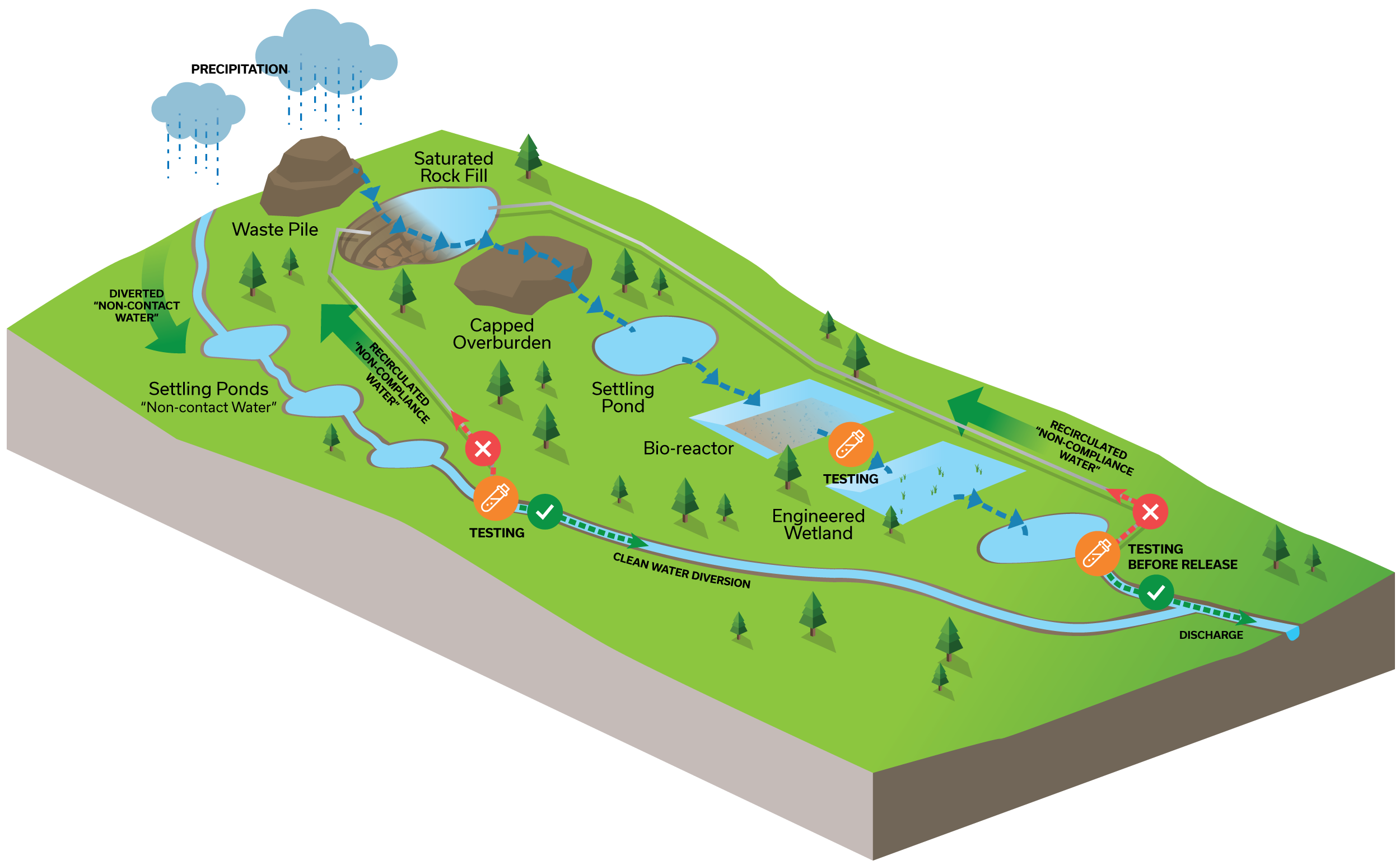Selenium is a naturally-occurring element that is present in rocks, soil and water. Selenium is a micro-nutrient needed by all living things. In humans, selenium has strong anti-oxidant properties and is critical for reproduction, thyroid hormone metabolism and DNA synthesis.
If the quantity or concentration of selenium gets too high in some types of animals that lay eggs, like fish and birds, it can have a negative impact on them.
Montem Resources is a steelmaking coal company in the Crowsnest Pass, Alberta. We purchased our assets, in 2016 and are working to gain final regulatory approval to re-start mining at the Tent Mountain Mine.
Beef, poultry, oily fish, and certain nuts are all high in selenium.
Montem Resources Alberta Operations Ltd.
7720 17 Ave
PO Box 610
Coleman, AB T0K 0M0
SELENIUM AND MINING
All rocks contain natural chemical elements and a variety of metals and non-metals, such as selenium. Selenium can be exposed during mining because the surface area of the rocks increase as the mine develops. As water flows over broken rocks they are exposed to oxygen, and selenium becomes more readily dissolved in water. Selenium may enter the aquatic environment and become more available to organisms. When it comes to mining, the objective is to keep the concentrations of selenium in water below concentrations that may cause any adverse effects. To do this, we measure and monitor selenium in the aquatic environment and determine which protection strategies are required.
WHAT WE ARE DOING ABOUT IT
AVOIDANCE
Substantially reduce selenium release and subsequent concentration levels by selectively mining. For example:
Avoid disturbing rocks with high selenium content
Avoid placement of waste rock in active drainages
MITIGATION
Reduce the risks of selenium release by water capture, backfilling waste rock in pits, and saturated zones in waste rock piles.
Capture mine-impacted water for storage in mine pits
Use saturated rock fills (submerged waste rock dumps to reduce oxidization)
PREVENTION
Control selenium leaching and the release of selenium-enriched water by active surface water management, construction techniques, and covers that will limit water and oxygen exposure to the waste rock. These prevention strategies can reduce and potentially eliminate selenium at the source and decrease the volume of water that requires treatment. For example:
In-pit waste rock backfilling to reduce disturbance footprint and selenium oxidation
Water diversions to limit the volume of water contacting waste dumps
TREATMENT
Remove contaminants of concern from the environment, and implement passive treatment measures such as constructed wetlands and/or bio-chemical reactors.
Engineered treatment systems to remove and reduce selenium from mine-impacted water
Engineered bio-chemical reactors that use microbes to reduce and remove selenium from water
Natural and constructed wetlands and pit lakes to slow water flow allowing selenium to fall out of the water and encourage the natural bio-reactor process
At Tent Mountain we will create a robust and responsible water management plan that is best suited for the site and based on a layered approach to mitigate and treat selenium.

